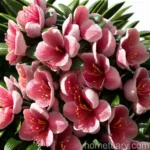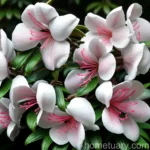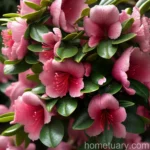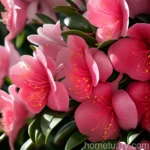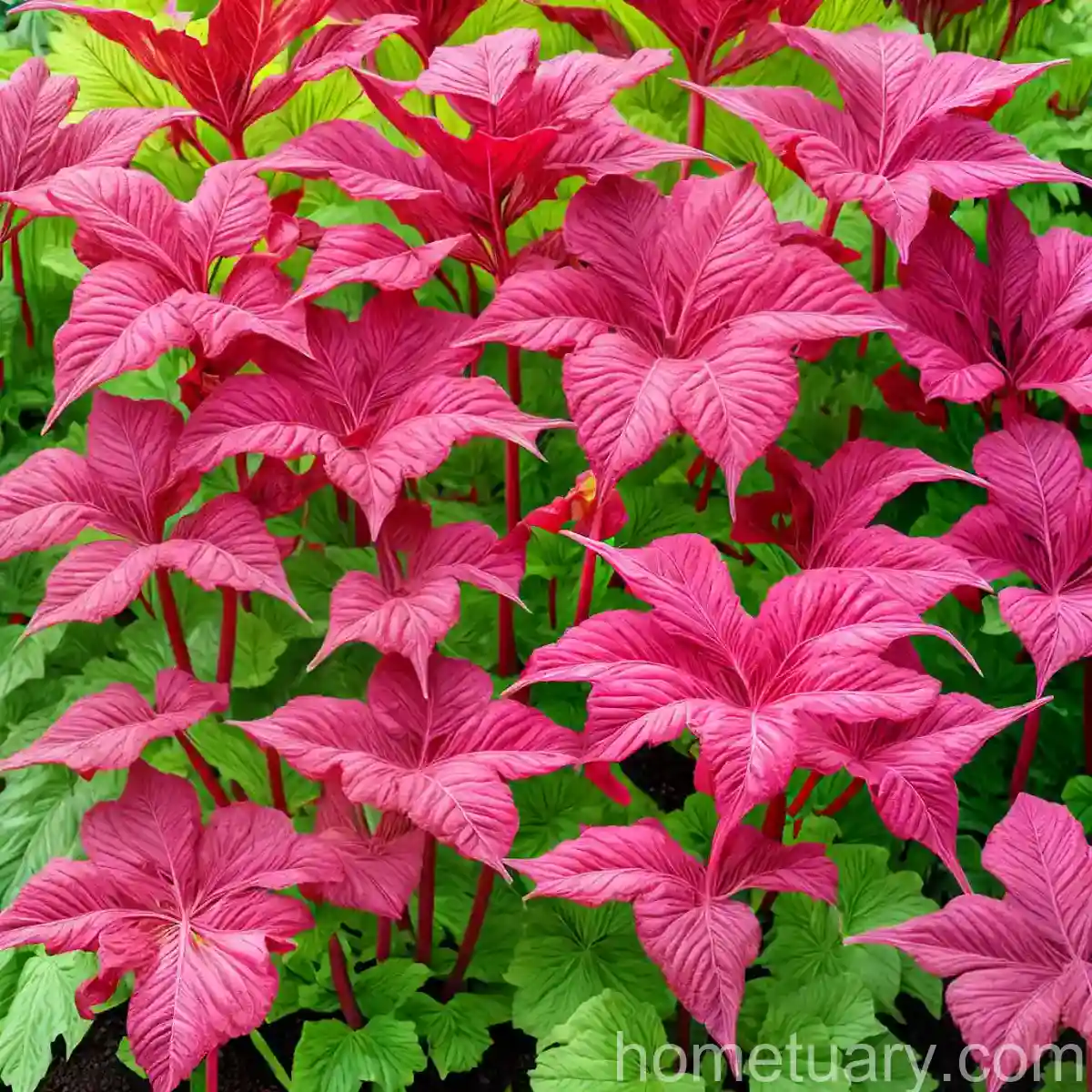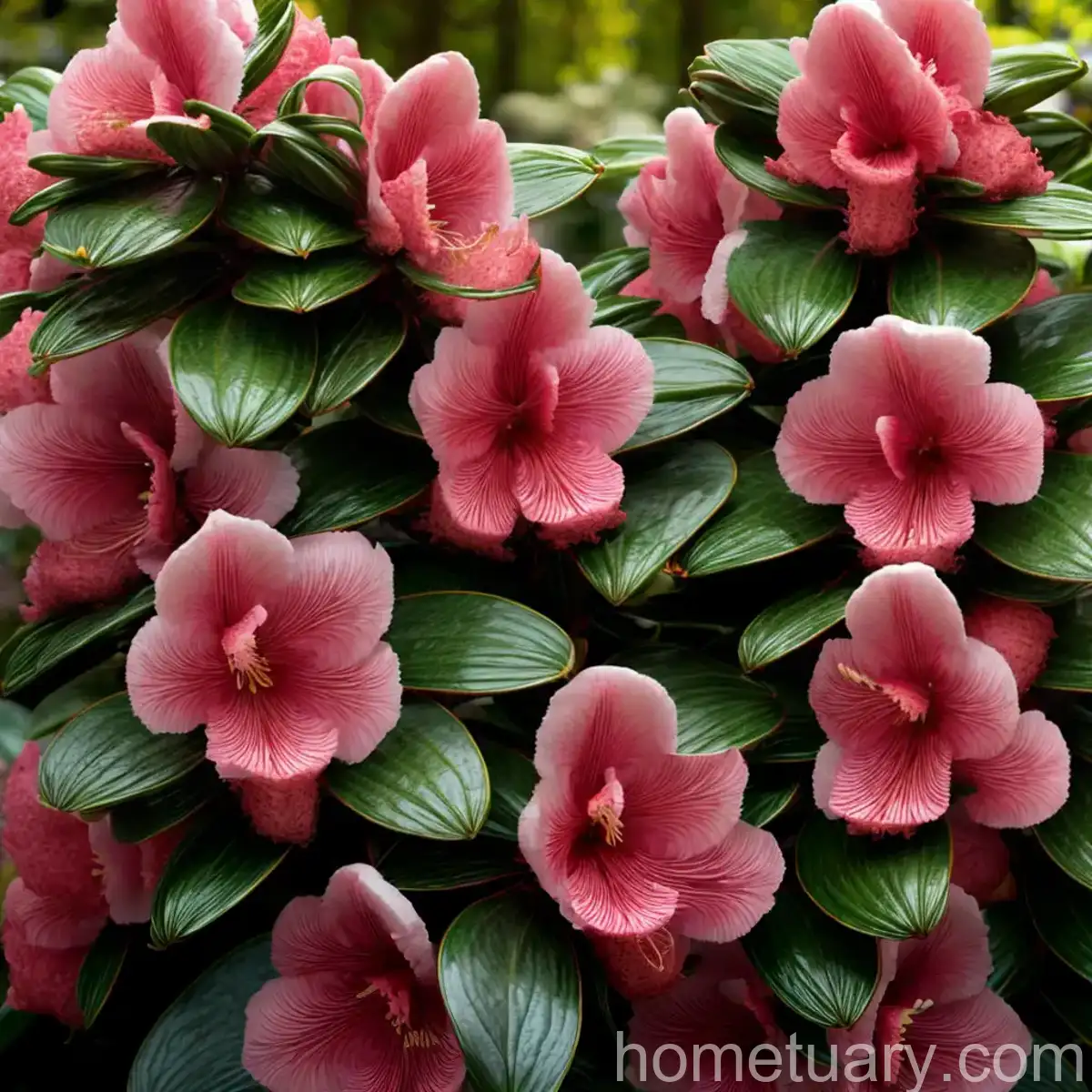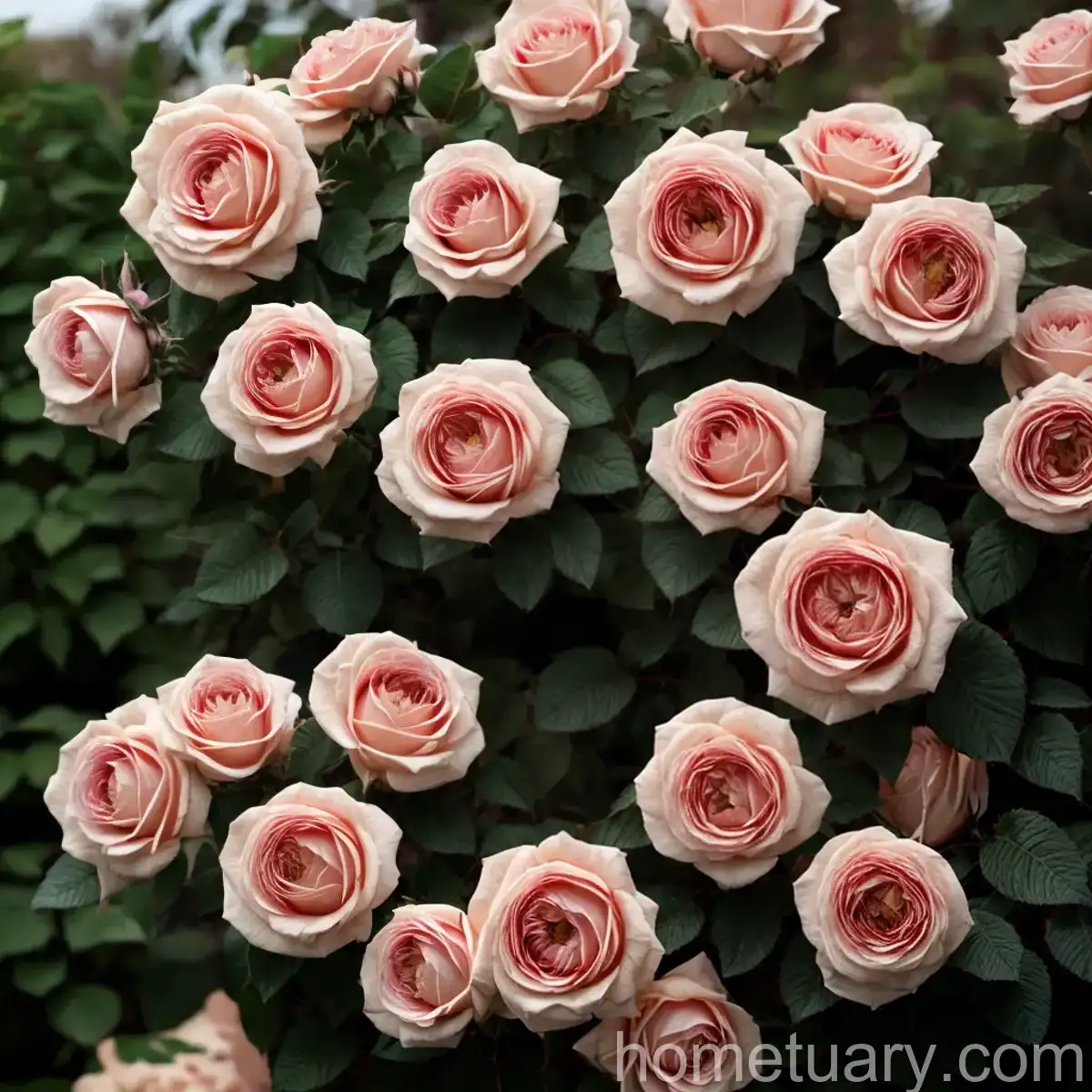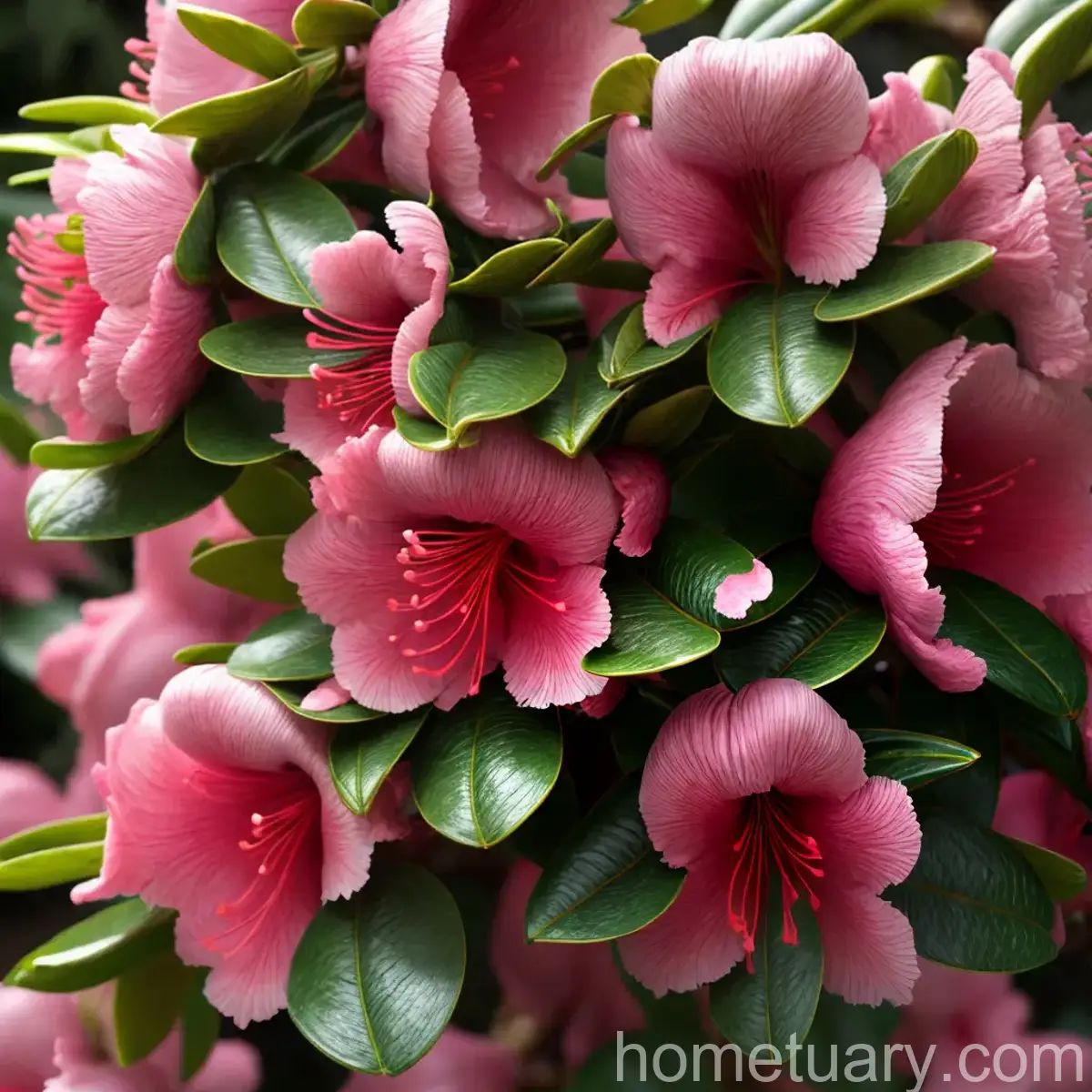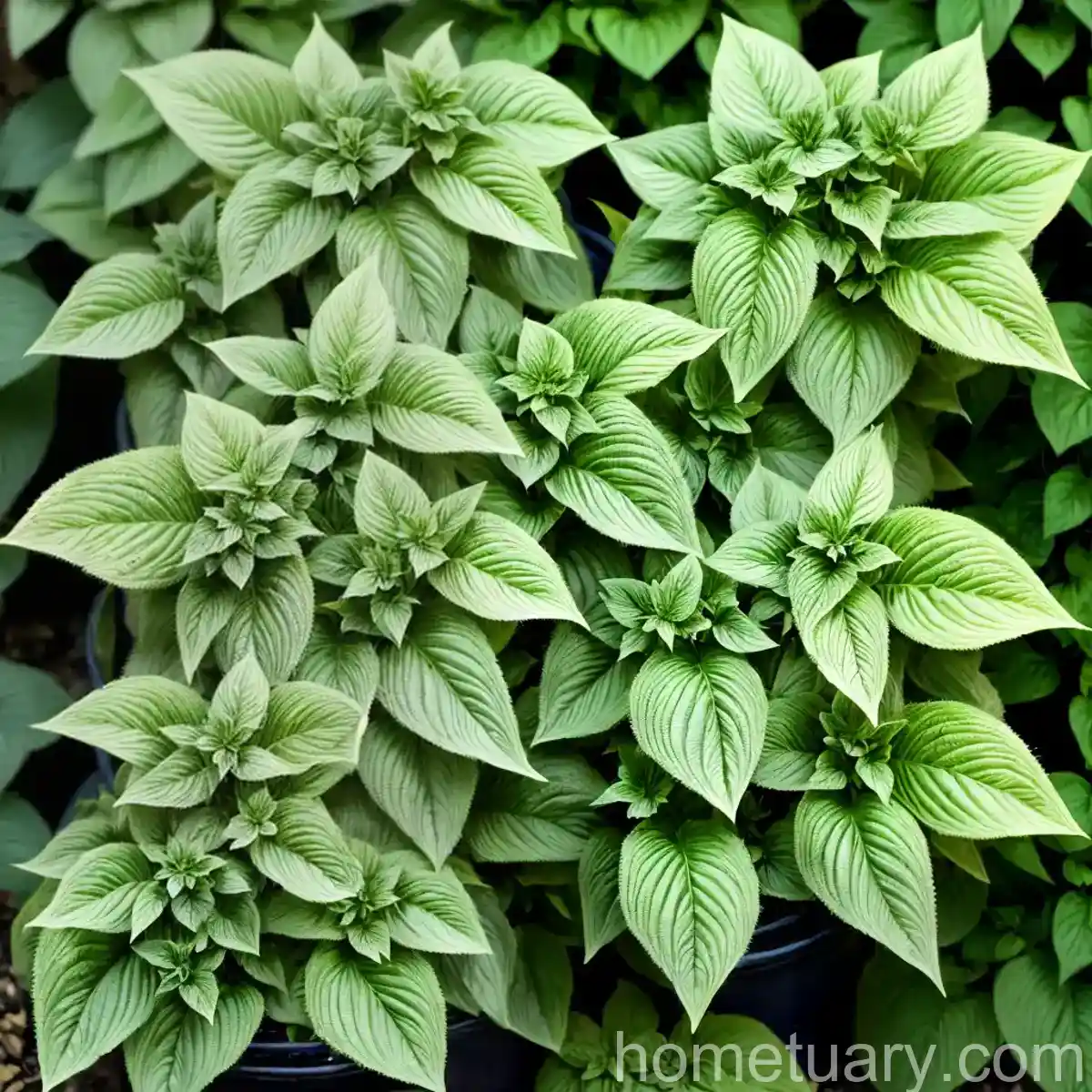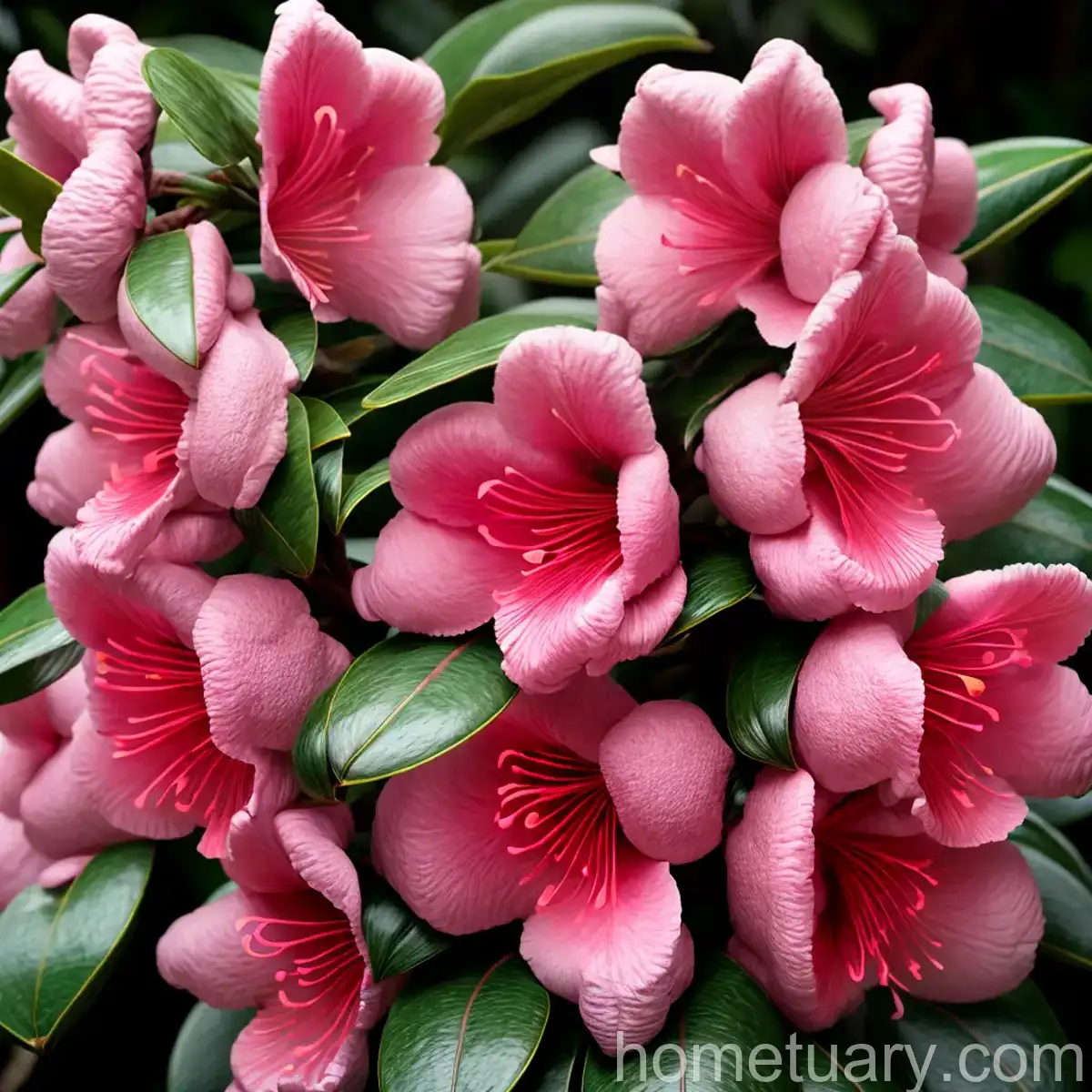All About Rhododendron (Rhododendron sinogrande)
Rhododendron (Rhododendron sinogrande) is a stunning flowering shrub that belongs to the family Ericaceae. Commonly known by the name “rhododendron”, this plant is cultivated for its vibrant and showy flowers, making it a popular choice for gardens, parks, and landscapes. In this comprehensive guide, I will delve into the various aspects of growing and caring for Rhododendron sinogrande, covering topics such as cultivation, maintenance, common pests and diseases, as well as interesting facts about this botanical marvel.
What is Rhododendron (Rhododendron sinogrande)?
Rhododendron sinogrande, also known as the “giant-leaved rhododendron”, is a species of rhododendron native to the eastern Himalayas. It is characterized by its large, glossy, dark green leaves and impressive clusters of bell-shaped, fragrant, creamy-white flowers. This species is particularly renowned for its majestic size, often growing into a large shrub or small tree, making it a striking focal point in any garden or landscape setting.
Key Takeaways – Rhododendron (Rhododendron sinogrande)
- Scientific Name: Rhododendron sinogrande
- Common Name: Rhododendron, Giant-leaved Rhododendron
- Family: Ericaceae
- Native Habitat: Eastern Himalayas
- Characteristics: Large, glossy dark green leaves, clusters of bell-shaped, fragrant, creamy-white flowers
- Growth Habit: Large shrub or small tree
Now that we have an overview of what Rhododendron sinogrande is, let’s delve into the details of how to cultivate and care for this exquisite plant.
Cultivation of Rhododendron (Rhododendron sinogrande)
Cultivating Rhododendron sinogrande requires attention to specific cultural and environmental requirements to ensure its optimal growth and blooming. The following are key factors to consider when cultivating this stunning flowering shrub:
Water
- Adequate and consistent moisture is crucial for the healthy growth of Rhododendron sinogrande. This species thrives in well-drained, moist soil and should be watered regularly, especially during dry spells. It is essential to avoid waterlogged conditions, as this can lead to root rot and other moisture-related issues.
Sunlight
- While Rhododendron sinogrande prefers partial shade to dappled sunlight, it is essential to protect it from harsh midday sun, especially in warmer climates. Providing filtered sunlight or dappled shade helps to maintain the plant’s vibrant foliage and encourages prolific flowering.
Soil
- The right soil conditions are critical for the successful cultivation of Rhododendron sinogrande. This species thrives in acidic, organic-rich, well-draining soil. It is advisable to amend the soil with organic matter, such as compost or pine bark, to enhance its moisture retention and acidity. Additionally, mulching around the base of the plant helps to conserve moisture and maintain a cool root environment.
Uses of Rhododendron (Rhododendron sinogrande)
The versatility and visual splendor of Rhododendron sinogrande make it a valuable addition to various landscaping and gardening applications. Here are some common uses of this stunning plant:
- Garden Ornament: Rhododendron sinogrande serves as a captivating focal point in gardens and landscapes, adding a touch of elegance with its large, glossy leaves and profusion of fragrant white blooms.
- Hedging and Screening: Due to its vigorous growth habit and lush foliage, Rhododendron sinogrande can be utilized as a natural hedge or screen, providing privacy and visual interest.
- Shade and Accent Plant: Its tolerance for partial shade makes it an ideal candidate for shaded gardens or woodland settings, where it can be used to add visual appeal and enhance the contrast of foliage textures.
- Container Planting: Rhododendron sinogrande can be cultivated in large containers, allowing it to be showcased on patios, decks, or in any outdoor space where its beauty can be admired up close.
Fertilizer
- When it comes to fertilizing Rhododendron sinogrande, it is essential to use a specialized acidic fertilizer formulated for rhododendrons, azaleas, and other acid-loving plants. Applying the fertilizer in early spring before new growth appears and again after flowering helps to support the plant’s nutrient needs and promotes healthy foliage and blooms.
Pruning
- Pruning is an essential aspect of Rhododendron sinogrande care, as it helps to shape the plant, encourage bushy growth, and remove dead or diseased branches. Pruning is best done immediately after flowering to avoid cutting off potential blooms for the following season. It is crucial to use sharp, sterile pruners to make clean cuts and minimize the risk of disease transmission.
Propagation
- Rhododendron sinogrande can be propagated through various methods, including semi-hardwood cuttings, layering, and seed propagation. Each method has its own set of requirements and considerations, and it is essential to select the most suitable propagation technique based on the availability of plant material and the desired outcomes.
Container Popularity
- Due to its striking appearance and versatility, Rhododendron sinogrande is a popular choice for container planting. Its adaptability to container growth allows it to be showcased on patios, balconies, and other outdoor spaces, bringing its beauty closer to the observer and providing an opportunity to appreciate its stunning foliage and blooms.
Common Diseases of Rhododendron (Rhododendron sinogrande)
Rhododendrons are susceptible to a few common diseases that can affect their health and vitality. Understanding these diseases and their symptoms is pivotal in implementing timely preventive measures and treatments to protect Rhododendron sinogrande from potential harm. Some common diseases that affect Rhododendron sinogrande include:
- Phytophthora Root Rot: This fungal disease attacks the roots of rhododendrons, causing wilting, yellowing of foliage, and eventual death of the plant. To prevent Phytophthora root rot, it is crucial to provide well-drained soil and avoid overwatering.
- Powdery Mildew: Powdery mildew is a fungal disease that manifests as powdery white spots on the leaves of rhododendrons. It can weaken the plant and affect its overall appearance. Regular monitoring and proper ventilation can help mitigate powdery mildew.
- Leaf Spot: Leaf spot, caused by fungal pathogens, presents as circular lesions on the leaves of Rhododendron sinogrande. Clean cultural practices, such as removal of infected leaves and providing adequate air circulation, can aid in controlling the spread of leaf spot.
Disease Diagnosis
Diagnosing diseases in Rhododendron sinogrande involves closely monitoring the plant for any signs of distress, including changes in leaf color, texture, or overall vigor. Additionally, it is important to inspect the foliage for any discoloration, spots, or abnormal growth patterns. Should any abnormalities be observed, it is advisable to seek the expertise of a plant pathology specialist or a local horticultural extension service to accurately diagnose the issue and implement an effective management strategy.
Common Pests
In addition to diseases, Rhododendron sinogrande can fall victim to various pests that can compromise its health and appearance. Being vigilant in monitoring for signs of pest infestation and taking proactive measures to address these issues is essential for the well-being of the plant. Common pests that can affect Rhododendron sinogrande include:
- Azalea Lace Bug: These small insects feed on the sap of the leaves, causing stippling and discoloration. Regular inspection and insecticidal treatments can help manage azalea lace bug infestations.
- Weevils: Weevils are known to feed on the foliage of rhododendrons, leading to characteristic notching along the leaf margins. Implementing cultural controls and using insecticidal solutions can aid in mitigating weevil damage.
Botanist’s Tips for Successful Rhododendron Sinogrande Care
As a plant scientist with a passion for enhancing the understanding and cultivation of ornamental plants, I have compiled a set of valuable tips for successful Rhododendron sinogrande care, aiming to promote its health, vigor, and visual appeal. Here are some expert tips to consider when growing and maintaining Rhododendron sinogrande:
- Selecting the Right Location: Choose a site with dappled sunlight and well-drained, acidic soil for optimal growth and blooming.
- Mulching: Apply a thick layer of mulch around the base of the plant to retain moisture, suppress weed growth, and insulate the soil.
- Consistent Watering: Maintain a regular watering schedule, ensuring that the soil is kept consistently moist but not waterlogged to promote healthy root development.
- Pruning Guidelines: Practice selective pruning to remove dead or damaged branches, promote air circulation, and shape the plant after flowering to maintain its desired form.
- Fertilization Timing: Apply an acidic fertilizer formulated for rhododendrons and azaleas in early spring and after flowering to support the plant’s nutrient needs.
- Pest and Disease Monitoring: Regularly inspect the plant for signs of pests and diseases, and promptly address any issues through appropriate preventive or remedial measures.
Fun Facts about Rhododendron (Rhododendron sinogrande)
-
The leaves of Rhododendron sinogrande can grow to an impressive size, often exceeding 30 centimeters in length, adding to its striking appearance.
-
This species is known for its fragrant blooms, which provide an enticing aroma that can enhance the sensory experience of any garden or landscape setting.
-
Rhododendron sinogrande is often a favored choice for woodland gardens due to its affinity for shaded environments and its ability to thrive amidst trees and other shade-providing elements.
-
In traditional herbal medicine, certain species of rhododendron have been utilized for their medicinal properties, although it is essential to note that some parts of the plant can be toxic if ingested.
Links to External Resources
For additional information regarding the cultivation, care, and botanical significance of Rhododendron sinogrande, the following resources provide valuable insights into the world of rhododendrons and related topics:
- The American Rhododendron Society
- Royal Horticultural Society: Rhododendrons and Azaleas
- International Rhododendron Registry and Checklist
- North American Rock Garden Society: Rhododendrons
- Pacific Rhododendron Society
With its captivating blooms, lush foliage, and overall ornamental appeal, Rhododendron sinogrande continues to captivate gardeners, horticulturists, and plant enthusiasts alike, showcasing its enduring charm and botanical significance.




